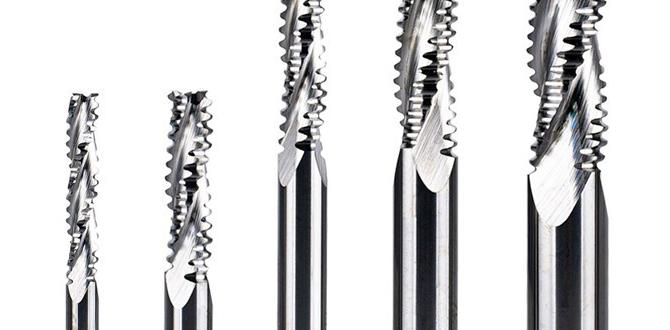A 1/8 inch carbide end mill, especially one designed for difficult materials like Inconel, is the key to reducing chatter and achieving smooth cuts when machining. Choosing the right geometry and coating, along with proper machine setup and speeds, will solve your Inconel machining challenges.
Working with tough metals like Inconel can feel like a wrestling match, especially when you’re just starting out. You want smooth, clean cuts, but what you get instead are those frustrating, noisy vibrations – chatter. It’s a problem that can ruin your workpiece, wear down your tools faster, and make you doubt your skills. But what if I told you that a specific, small tool, a 1/8 inch carbide end mill, might just be your secret weapon against this machining menace, particularly when tackling tricky materials like Inconel 718? This article is all about unlocking that solution, showing you how to select and use the right tool to finally get those chatter-free results you’re after.
What is Chatter and Why is it Such a Pain?
Chatter, in the machining world, is that unpleasant, high-frequency vibration that happens when the cutting tool and the workpiece aren’t interacting smoothly. Think of it like skipping a needle on a record player – it’s jarring, noisy, and definitely not good. This vibration can cause a host of problems:
Poor Surface Finish: The most obvious sign is a rough, uneven surface on your part. Instead of a clean, precise finish, you get wavy lines and gouges.
Tool Wear: Chatter puts immense stress on your cutting edges. This means your carbide end mill will wear out much faster than it should, leading to premature failure and increased costs.
Machine Damage: In severe cases, persistent chatter can even lead to damage to your milling machine itself, affecting spindle bearings and other delicate components.
Dimensional Inaccuracy: The constant vibration makes it hard to maintain precise dimensions on your workpiece, potentially leading to parts that are out of spec.
Frustration and Wasted Time: Let’s be honest, dealing with chatter is demoralizing. It forces you to slow down, rethink your process, and often leads to scrapped parts and lost time.
Why Inconel is a Chatter Magnet
Inconel, and specifically Inconel 718, is renowned for its incredible strength and resistance to heat and corrosion. These are fantastic properties for aerospace and high-temperature applications, but they make it a nightmare for machinists. Inconel is:
Hard and Tough: It requires significant force to cut, leading to high cutting pressures that can easily induce vibration.
Gummy: It tends to “gum up” on the cutting edge, creating undesirable friction and heat.
Work Hardening: As you cut into it, Inconel actually gets harder, making subsequent cuts even more difficult.
This combination of properties means that standard machining practices and tools often struggle with Inconel, making chatter almost inevitable without specialized approaches.
The Humble Heroes: 1/8 Inch Carbide End Mills
When you think of tackling Inconel, you might picture massive, heavy-duty tools. However, sometimes the solution comes in the smallest packages. A 1/8 inch carbide end mill, when chosen correctly, offers several advantages for reducing chatter, especially in materials like Inconel:
Rigidity: A smaller diameter tool generally has more inherent rigidity than a larger one, assuming similar flute counts and overall construction. This means it’s less likely to flex and vibrate under load.
Higher Spindle Speed Capability: Smaller tools can often be run at significantly higher spindle speeds. This can be beneficial for achieving optimal cutting speeds for certain materials and tool geometries.
Lower Cutting Forces (Per Tooth): While the overall material is tough, a smaller diameter tool can sometimes allow for finer chip loads per tooth, which can lead to smoother engagement and disengagement from the material.
Access to Small Features: For intricate parts or detailed work, a 1/8 inch end mill is essential. Often, these detailed areas on high-performance parts are made from or require machining of Inconel.
The Importance of “Extra Long” and “10mm Shank”
When we talk about a “carbide end mill 1/8 inch 10mm shank extra long for Inconel 718 reduce chatter,” several key features are highlighted:
1/8 Inch Diameter: This is our working size, offering the rigidity mentioned above.
10mm Shank: This refers to the diameter of the toolholder or collet that grips the end mill. A 10mm shank means it will fit into a standard 10mm collet or tool holder, common in many smaller milling machines and CNC setups. Using the correct size holder is crucial for runout – any wobble increases chatter.
Extra Long: This feature is critical. Longer flutes provide more reach, allowing you to machine deeper pockets or features. However, extreme length can also introduce flexibility. For Inconel chatter reduction, an “extra long” tool typically balances reach with sufficient rigidity. This often means a specialized design with more robust flutes and potentially a smaller effective cutting length compared to a standard flute length for that overall tool length.
Carbide: This material is essential for Inconel. Carbide can withstand the high temperatures generated during cutting far better than High-Speed Steel (HSS), allowing for faster cutting speeds and longer tool life.
Choosing the Right 1/8 Inch Carbide End Mill for Inconel
Not all 1/8 inch carbide end mills are created equal, especially when you introduce the challenges of Inconel. Here’s what to look for:
1. Flute Count: Balancing Chip Evacuation and Rigidity
2 Flutes: Often preferred for aluminum and softer materials. Can work for Inconel in some situations, especially with very controlled chip load and good lubrication, but can struggle with chip evacuation in tougher materials.
3 Flutes: A good compromise for many materials. Offers better rigidity than 2-flute and better chip evacuation than 4-flute. A strong contender for Inconel.
4 Flutes: Generally provides the best rigidity and surface finish, but chip evacuation can be a bottleneck, especially in gummy materials like Inconel, which can lead to re-cutting chips and increased heat and chatter.
For Inconel, a 3-flute or a specialized 4-flute designed for high-temp alloys is often the best bet. Some “high-performance” 4-flute end mills have optimized flute geometries to help with chip evacuation even at higher flute counts.
2. Corner Radius: Adding Strength and Preventing Chipping
Square End: A sharp 90-degree corner is prone to chipping, especially in hard materials.
Corner Radius: A small radius (e.g., 0.010″ to 0.030″ for a 1/8″ end mill, or about 0.25mm to 0.75mm) significantly strengthens the cutting edge. This makes the tool much more robust when encountering the hardness of Inconel, reducing the likelihood of chipping and improving tool life. For Inconel, a corner radius is highly recommended.
3. Coating: The Extra Layer of Protection
Coatings are crucial for machining Inconel. They add a hard, wear-resistant layer and can improve lubricity and thermal resistance.
TiN (Titanium Nitride): A general-purpose coating. Okay for some steels, but often not enough for Inconel.
TiCN (Titanium Carbonitride): A harder coating than TiN, offering better wear resistance. A step up.
AlTiN (Aluminum Titanium Nitride) / TiAlN: This is often the go-to coating for high-temperature alloys like Inconel. It forms a protective aluminum oxide layer at high temperatures, which prevents the tool from welding to the workpiece and significantly improves performance and tool life in demanding applications.
DLC (Diamond-Like Carbon): Extremely hard and has excellent lubricity, making it great for preventing built-up edge. Can be effective but is often more expensive.
For Inconel, AlTiN/TiAlN is usually the most effective and cost-efficient choice.
4. Helix Angle: Balancing Cutting Action and Stability
Standard Helix (30°): A good all-around choice.
High Helix (45° or more): Offers a shearing cutting action, which can lead to smoother cuts and reduced cutting forces. However, a very high helix angle can sometimes reduce rigidity and increase the tendency to “climb mill” or pull the workpiece, which can contribute to chatter if not managed.
Variable Helix: Some advanced end mills feature a variable helix angle (e.g., 35° to 38°). This is designed to break up harmonic vibrations and reduce chatter, making them excellent for difficult-to-machine materials.
For Inconel, a high helix (around 45°) or a variable helix design is often highly beneficial for chatter reduction.
5. End Mill Type: Specialized Geometries Matter
Standard End Mill: Designed for general-purpose machining.
High-Performance/Machining of Exotic Alloys End Mills: These are specifically engineered with features like enhanced coatings, optimized flute geometries, tighter tolerances, and sometimes variable flute spacing or helix angles to handle materials like Inconel, titanium, and stainless steels.
Always look for end mills marketed for their suitability for stainless steels, nickel alloys, or high-temperature alloys.
A good example of a specialized tool would be a 1/8 inch, 3-flute or 4-flute carbide end mill with a 0.015″ radius, an AlTiN coating, and a variable helix angle, designed for nickel alloys.
Key Machining Parameters for Inconel with a 1/8″ End Mill
Once you have the right tool, setting up your machine correctly is paramount. Machining Inconel requires a different approach than machining aluminum or mild steel.
Speeds and Feeds: The Delicate Balance
This is where things get tricky and where chatter often rears its head. The goal is to achieve a chip load that’s heavy enough to create a proper chip, preventing re-cutting and excessive heat, but not so heavy that it overloads the tool or machine. For a 1/8 inch end mill in Inconel, you’ll generally be looking at:
Surface Speed (SFM): This is the speed at which the cutting edge moves through the material. For Inconel with carbide, you’re typically looking in the range of 30-60 SFM. This translates to a relatively low RPM (Revolutions Per Minute) for a 1/8 inch tool.
Calculation: RPM = (SFM 3.82) / Diameter (inches)
Example: For 40 SFM and a 1/8″ (0.125″) tool: RPM = (40 3.82) / 0.125 = 1222 RPM. Many small machines might struggle to go this low if they are geared for higher speeds.
Chip Load Per Tooth (IPT): This is the thickness of the material each cutting edge removes. This is critical for Inconel. Too thin, and you get rubbing, heat, and poor tool life. Too thick, and you risk tool breakage or excessive chatter. For a 1/8 inch end mill in Inconel, a starting point might be 0.0005″ to 0.0015″ IPT.
Feeds and Speeds Table Example:
| Tool Diameter | Flutes | Material | Surface Speed (SFM) | RPM | Chip Load Per Tooth (IPT) | Feed Rate (IPM) | Depth of Cut (DOC) | Width of Cut (WOC) | Notes |
| :———— | :—– | :———- | :—————— | :—— | :———————— | :————– | :—————– | :—————– | :———————————————————— |
| 1/8″ | 3 | Inconel 718 | 30-50 | 750-1200 | 0.0008 – 0.0012 | 1.8 – 4.3 | 0.010″ – 0.040″ | 0.020″ – 0.060″ | Use high-pressure coolant, consider trochoidal milling. |
| 1/8″ | 4 | Inconel 718 | 30-50 | 750-1200 | 0.0005 – 0.0010 | 1.5 – 3.8 | 0.010″ – 0.040″ | 0.020″ – 0.060″ | Ensure good chip evacuation, variable flute geometry helps. |
Note: These are starting points. Always consult your tool manufacturer’s recommendations and perform tests.
Feed Rate (IPM): This is calculated by: Feed Rate = RPM Number of Flutes Chip Load Per Tooth.
Example: At 1000 RPM, with a 3-flute end mill, and 0.001″ IPT: Feed Rate = 1000 3 0.001 = 3.0 IPM. This is a slow, deliberate feed rate.
Coolant and Lubrication
Machining Inconel generates a lot of heat. Without proper cooling and lubrication, the tool will dull rapidly, and chatter is almost guaranteed.
High-Pressure Coolant: This is almost indispensable for Inconel. A flood of coolant helps to:
Cool the cutting edge: Preventing it from overheating and losing its hardness.
Lubricate the cut: Reducing friction between the tool and the workpiece.
Flush chips away: Preventing them from being re-cut or packing up in the flutes.
Look for systems that can deliver coolant at 1000 PSI or more.
MQL (Minimum Quantity Lubrication): In cases where high-pressure coolant isn’t available or suitable (e.g., some specific CNC setups, or if you’re doing manual milling), a good quality MQL system with a lubricant specifically designed for exotic alloys can be used, but it’s generally less effective than copious high-pressure coolant for Inconel.
Tool Engagement Strategy
How you engage the material with the end mill can make a huge difference.
Conventional Milling: The tool rotates against the direction of feed. This generally creates a thicker chip at the start and thinner at the end, which can be unpredictable and increase chatter in hard materials.
Climb Milling: The tool rotates in the same direction as the feed. This starts with a thin chip that gets thicker. It generally results in less cutting force and better surface finish, and is highly recommended for Inconel and for Chatter Reduction. It pulls a chip rather than pushing it.
Important for CNC: Ensure there is zero backlash in your machine’s drive system for successful climb milling.
For Manual Mills: Be very attentive and be ready to control the handwheel as climb milling can try to “run away” from you if not carefully managed.
Trochoidal Milling (High-Speed Machining / Dynamic Milling): This is a specialized milling strategy where the tool follows a path of small, continuous arcs or loops. The key benefits are:
Constant Chip Load: Maintains a consistent chip thickness, preventing the tool from dwelling in the material.
Reduced Heat Build-up: Chips are smaller, and the tool is constantly moving.
Controlled Engagement: The arc path keeps the engagement angle optimized.
Maximizes Engagement: Allows for larger radial engagement (Width of Cut) while keeping axial depth of cut shallow.
Trochoidal milling is excellent for breaking the harmonic vibration cycles that cause chatter and is a proven technique for difficult-to-machine alloys. This strategy often works best with higher spindle speeds and shallower depths of cut. Many CAM software packages now have specific “dynamic milling” or “trochoidal milling” toolpath generation features.
Depth and Width of Cut
For Inconel and a 1/8 inch tool, you generally want to:
Shallow Axial Depth of Cut (DOC): Aim for something like 0.010″ to 0.040″ (0.25mm to 1mm). This reduces the amount of material removed at any one time, lowering cutting forces.
Controlled Radial Width of Cut (WOC): This depends on the strategy. For conventional or climb milling, you might use a WOC of 10-25% of the tool diameter (0.012″ to 0.030″). For trochoidal milling, the WOC is often kept much higher, as the path is designed to manage forces.
Machine Rigidity and Setup
This is non-negotiable. Chatter is amplified by a flexible system.
Solid Workholding: Ensure your workpiece is clamped down very securely. Any movement here will cause chatter.
Stiff Tool Holder: Use a high-quality collet chuck or side-lock holder. Avoid runout (wobble) as much as possible. A 10mm collet needs to be the correct size and in good condition.
Machine Condition: Ensure your milling machine is in good repair. Spindle bearings, ways, and drive systems should be tight and free of excessive play. For CNCs, table and spindle runout should be checked.
Shortest Possible Tool Projection: While you might need reach, try to keep the amount







